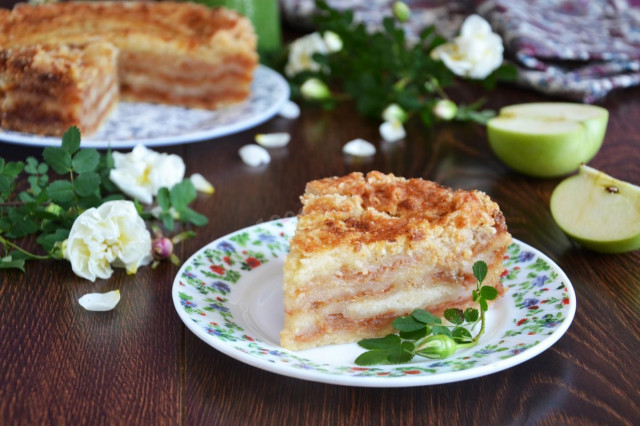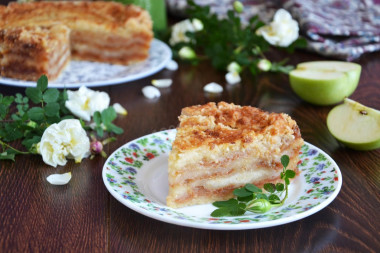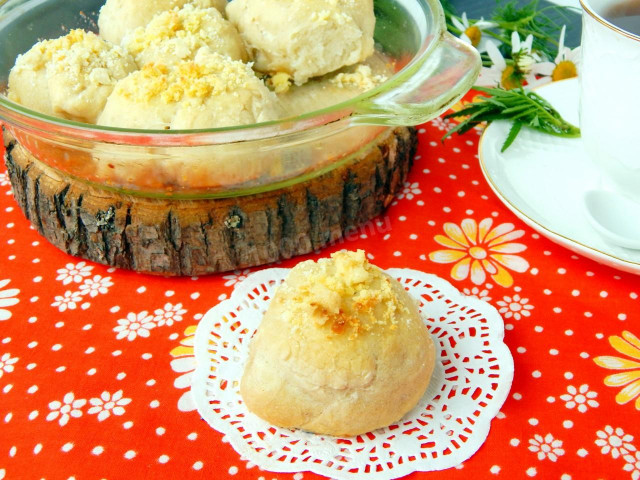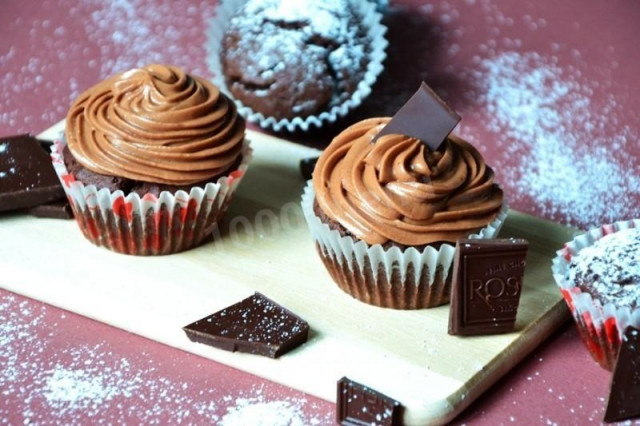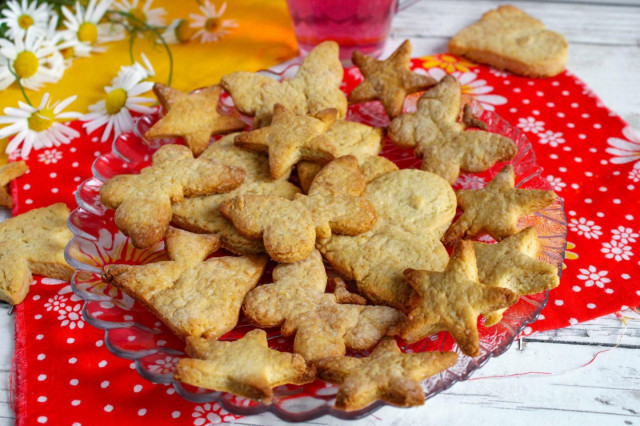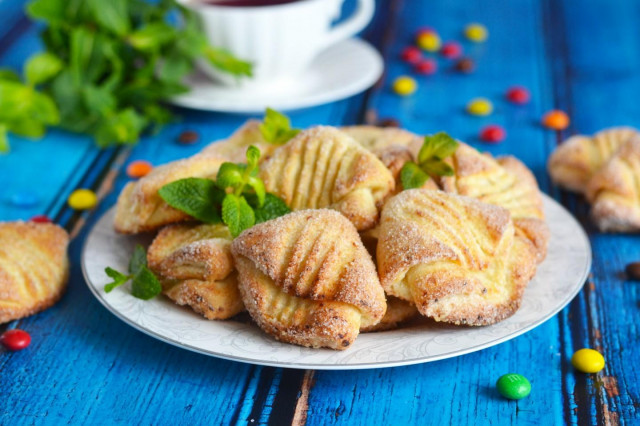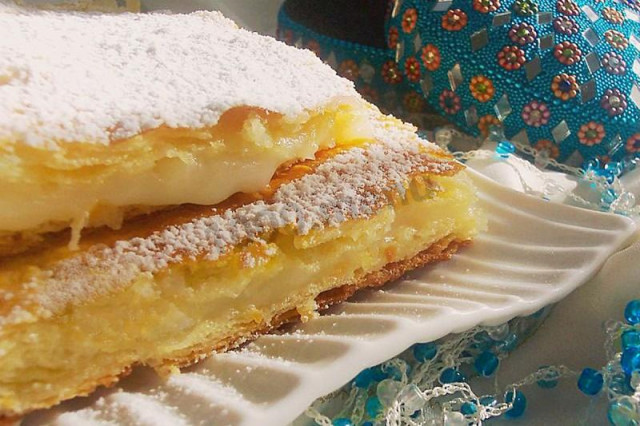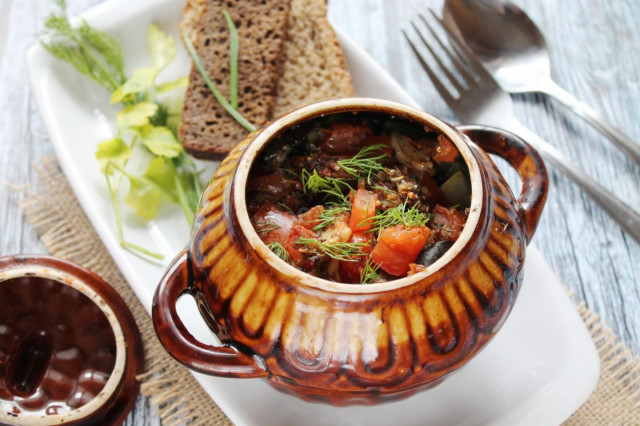Composition / ingredients
Step-by-step cooking
Step 1:
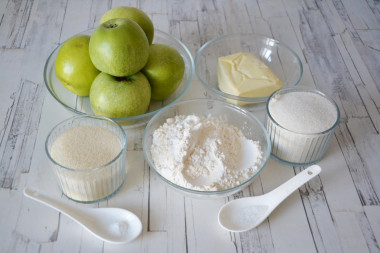
How to make a very simple bulk apple pie? Prepare the ingredients. To make a pie "Three glasses" with apples, we will need: flour, semolina, sugar, vanilla (or 1 tbsp vanilla sugar), salt and sweet and sour juicy apples.
Step 2:
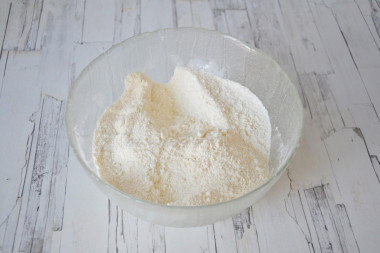
In a bowl, combine the sifted flour, semolina, vanilla (I have vanilla intensive and salt. Mix everything well. Divide the mass into 4 equal parts.
Step 3:
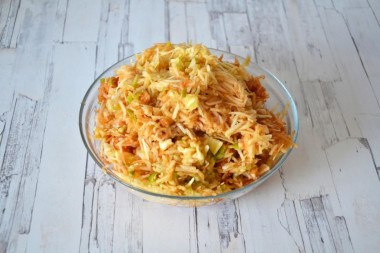
Peel and grate the apples on a coarse grater. Divide the grated apples into 3 equal parts. Since the grating process is long, grated apples can darken (depends on the variety). It's not scary. So the pie will turn out even more beautiful - all the layers will be visible.
Step 4:
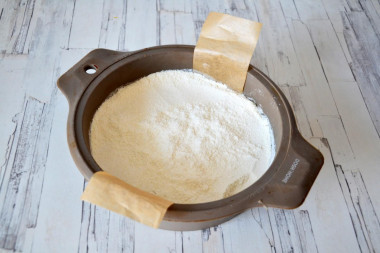
Line the bottom and sides of the baking dish (Ø 20-22 cm) with parchment. Put the first part of the dry mixture evenly on the bottom. Spread one part of the apples evenly on top.
Step 5:
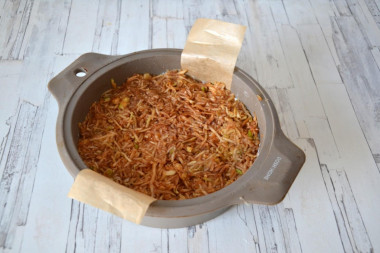
Alternate layers until the apples run out. The last layer should be a dry mixture.
Step 6:
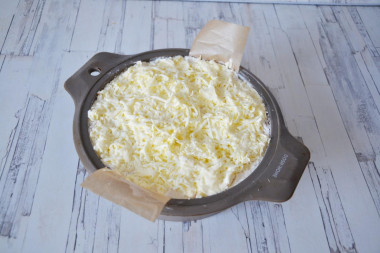
Grate the cooled butter on top and spread evenly over the entire surface of the pie.
Step 7:
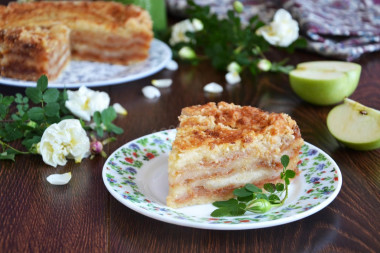
Put the pie in a preheated 180 ° C oven for about 1 hour and 20 minutes. The surface should be browned. Remove the pie from the oven and cool completely. Then remove from the mold and cut into pieces. Enjoy your meal!
This pie got its second name - 3 cups - because the dough is based on 3 cups of ingredients - one flour, one sugar and one semolina. In principle, this is enough. The rest is added as desired: vanilla or vanilla sugar can be added to the dough, as well as salt to shade the taste of baking. In grated apples or in the dough, or there and there, you can add 1-2 tsp ground cinnamon.
To make the pie not very fat, it is better to take butter no more than 72% fat content.
It is better to take juicy apples and, when rubbing, collect the juice released from them and pour it over each apple layer. So the pie will turn out tastier and juicier.
Make it a rule that the amount of flour is never determined in advance when preparing flour and bread products! This indicator will always fluctuate, since flour can be of different humidity, differ in the degree of grinding and the level of gluten, and other indicators, which inevitably affects its ability to bind to the liquid mixture in the dough. Since it is impossible to do a laboratory test at home to determine all the parameters and indicators of flour, we recommend acting on the principle of "flour in water", that is, take liquids exactly according to the recipe, and add flour to the liquid component not all at once, but in parts, achieving the desired consistency (while flour may take a little more or on the contrary, less than in the recipe). Thanks to this technique, the proportions of the ingredients are more accurately preserved and the quality of the dough is not lost.
Be prepared for the fact that flour may need more or less than indicated in the recipe. Focus not on the amount of flour, but on the desired consistency of the dough. To avoid mistakes, read about flour and its properties!
Keep in mind that everyone's ovens are different. The temperature and cooking time may differ from those specified in the recipe. To make any baked dish successful, use useful information about the features of ovens !
Caloric content of the products possible in the composition of the dish
- Apples - 47 kcal/100g
- Dried apples - 210 kcal/100g
- Canned apple mousse - 61 kcal/100g
- Semolina - 340 kcal/100g
- Whole durum wheat flour fortified - 333 kcal/100g
- Whole durum wheat flour, universal - 364 kcal/100g
- Flour krupchatka - 348 kcal/100g
- Flour - 325 kcal/100g
- Granulated sugar - 398 kcal/100g
- Sugar - 398 kcal/100g
- Butter 82% - 734 kcal/100g
- Amateur unsalted butter - 709 kcal/100g
- Unsalted peasant butter - 661 kcal/100g
- Peasant salted butter - 652 kcal/100g
- Melted butter - 869 kcal/100g
- Salt - 0 kcal/100g
- Vanillin - 288 kcal/100g

